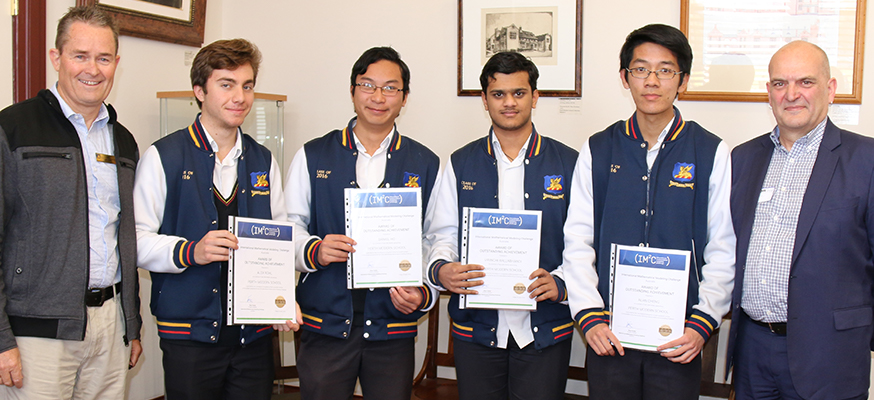
The very model of a modern mathematician
Research 2 Nov 2016 4 minute readThe benefits are many for high school students from around Australia who put their problem-solving and mathematical skills to the test in the International Mathematical Modeling Challenge, says Ross Turner.
The very model of a modern mathematician
Coordinated in Australia by the Australian Council for Educational Research (ACER), the International Mathematical Modeling Challenge (IM2C) is a competition for teams of up to four students from secondary schools around the world that seeks to develop and enhance students’ ability to visualise, understand and apply mathematics in the development of an original mathematical model to solve a common problem.
The problem set for the 2016 IM2C asked students to investigate how the organisers of an athletics competition could minimise their financial risk as they consider offering incentives to attract top-level competitors.
Four of the international teams that produced the best reports on the 2016 problem were recognised in an awards ceremony at the International Congress on Mathematical Education in Hamburg, with each team producing a short video about their work.
Australian participation and success
Participants in the 2016 IM2C included students from Perth Modern School and Trinity College, also in Perth, who shared the highest Australian honours, with both going on to the international award category.
Students from the Perth Modern School and Trinity College teams received Meritorious Awards, the second highest award category, in the international competition against a pool of 40 teams from 23 participating countries.

Meritorious Award winners in the 2016 IM2C from Perth Modern School, from left, team advisor Glen McClelland with team members Alex Rohl, Daniel Ho, Virinchi Rallabhandi and Alan Cheng, and ACER Principal Research Fellow Ross Turner.
Australian students in the 2016 IM2C benefitted from the opportunity to apply mathematical ideas in a real-world context, work as a team, investigate an interesting and challenging mathematical problem, exercise control over their learning, and pick up some useful mathematical tools along the way.
Get involved
Australian teams of up to four students from a school, together with a team advisor, can register online to enter the 2017 IM2C. Teams then choose a period of up to five consecutive days within the competition window – from 14 March to 7 April – in which they can work together on the centrally set problem. They then write a report about their work, and submit it online for judging. Registrations close on 13 March 2017.
Dates for the Australian competition window mean students in all Australian states and territories will be able to participate during Term 1. Once registered, teams and team advisors will receive an information pack to help them prepare. Additional resource materials are also available on the IM2C website. These include samples of student work, advice from the judging panel, and other support materials designed for teachers to use directly with students.
At the beginning of each team’s nominated five consecutive days within the competition window, the team advisor logs on to the website to gain access to the problem, and passes this on to the team. The clock then starts ticking.
In 2016, most Australian teams spent maths class time, and in some cases other school time, from Wednesday to Sunday, in order to complete their mathematical model and report.
Further information:
Visit the IM2C website at www.immchallenge.org.au or email your enquiry to contact@immchallenge.org.au